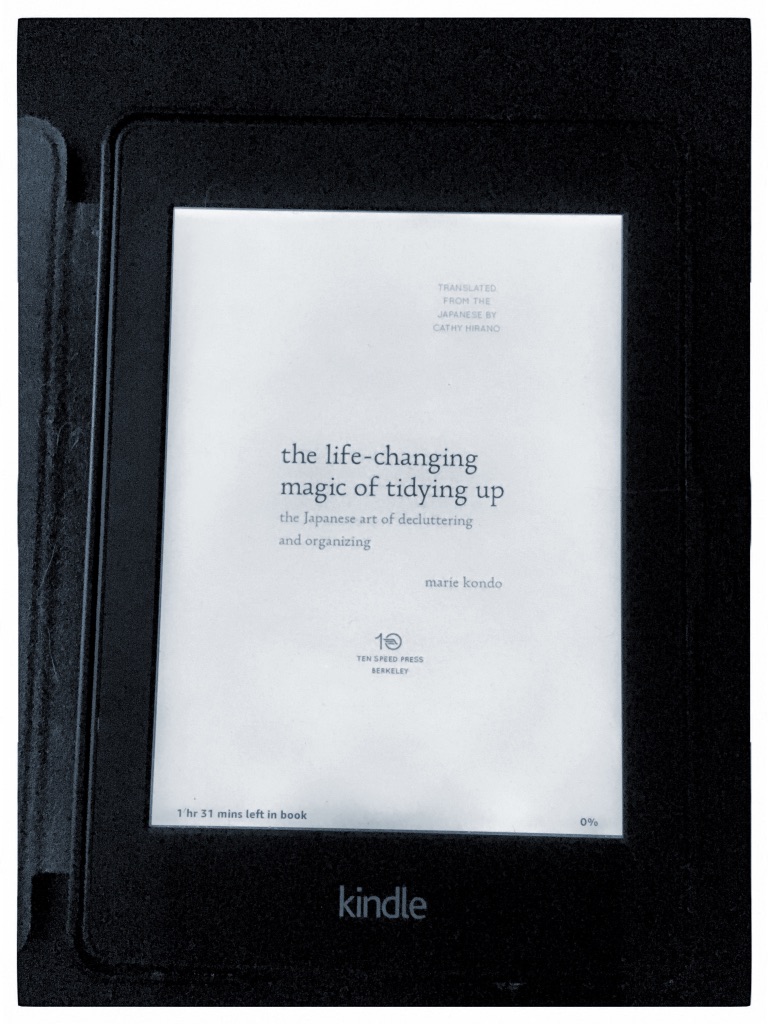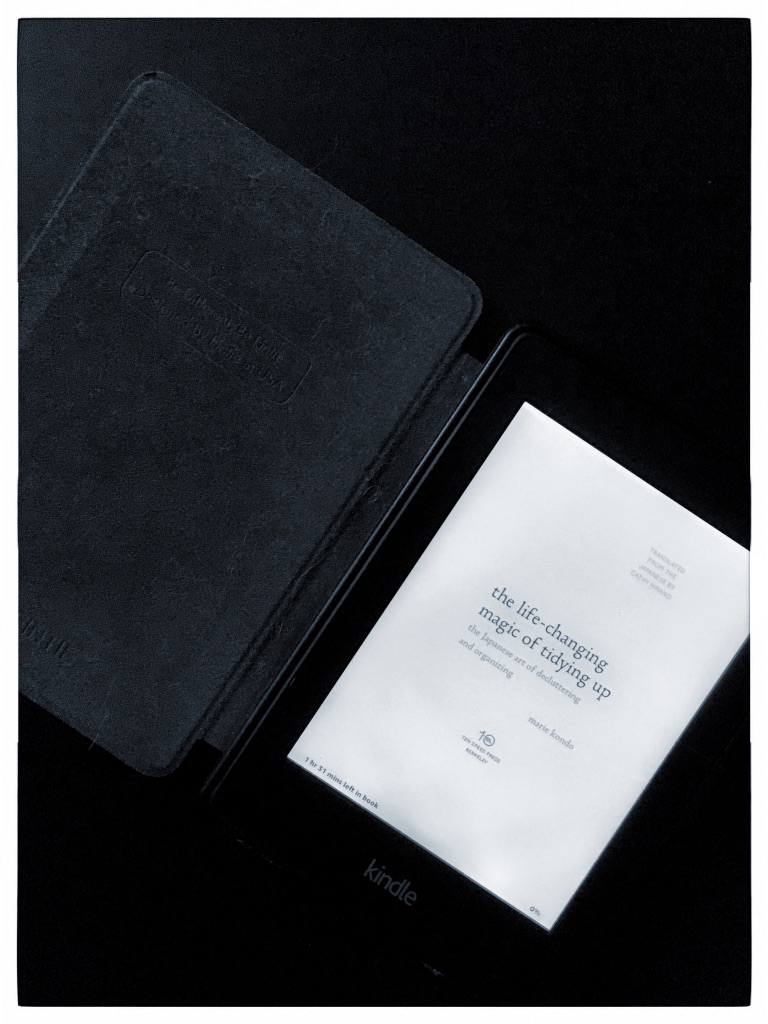
Freedom of choice is freedom of choosing. It’s also freedom not to choose, to decide when you do not want to choose.
—Simona Botti
My oh my. The world is my oyster, but unfortunately, I seem to be allergic to seafood. Which is an awkward way of saying: Overload is at an all-time high, I have to change something.
Minimalism and mental health
I’ve read tons of books about ADHD, anxiety disorders, and mindfulness to find out how I could help myself without medication. One thing I’ve learned is that I can focus and work better in a clean and organized environment. Moreover, I’ve learned that I should streamline as many processes as possible — what to cook and eat, what to wear, what music to listen to when working/writing/feeling blue, what to read … — and eliminate unnecessary choices to save time and energy. I’m also practicing my version of mindfulness, using the App Insight timer for meditation and following advice from authors like Ruby Wax and Mark Williams. Yoga and sport also help a lot.
Streamlining organizational processes and eliminating choices go hand in hand with decluttering, at least in my little corner of this world. I already started decluttering and discarding months (years?) ago, and though I read Francine Jay’s The Joy of Less early on, in the beginning, I didn’t have a system or plan for how and what to discard. I just knew I had too much stuff and I wanted to change that. For further inspiration, I read (and reviewed) Fumio Sasaki’s Goodbye Things as well as a German book by Lina Jachmann, Einfach leben. Finally, somewhere along the way to ADHD-relieving minimalism, I encountered Marie Kondo, and let me tell you: we had a rough start.
Marie and me: no love at first sight
To be more precise: the first time I read The life-changing magic of tidying up I was rather disappointed and a bit perplexed. Because when Marie Kondo explained that
The socks and stockings stored in your drawer are essentially on holiday. They take a brutal beating in their daily work, trapped between your foot and your shoe, enduring pressure and friction to protect your precious feet. The time they spend in your drawer is their only chance to rest.
I wasn’t sure what to make of this. I felt terribly sorry for my socks, which was NOT helpful for someone like me who tends to a) feel guilty for pretty much everything (thanks gran!) and b) anthropomorphize A LOT of things which makes discarding stuff even more difficult.
Take each item in one’s hand and ask: ‘Does this spark joy?’ If it does, keep it. If not, dispose of it.
But apart from that, all these sparks of joy she was talking about did not resonate with me. Why should I feel joy when holding a parka (that I clearly needed in winter), a pair of boots (again, a necessary item), or an alarm clock (of all things!)? If I only kept what “sparks joy” I would end up with full bookshelves and no underwear or socks (or alarm clock). Thus, I decided Kondo was not for me and put the book aside.
Several months later I listened to the wonderful and hilarious podcast By the book in which hosts Kristen and Jolenta did an episode on Marie Kondo and her bestseller. Realizing that I may have missed some important points, I decided to give Marie another chance. So I watched an episode of Mario Kondo’s show on Netflix. Eventually, I saw the light… Once I watched this lovely human being bounce through pure chaos while staying happy-go-lucky, I finally understood why she was taking her socks on a lovely little holiday every time she put them in a drawer. For my sometimes overly logical mind, her concept of sparking joy and respecting a spirit in the items we own was too elusive. But now I was ready to learn, so I decided to give her book another go.
We should be choosing what we want to keep, not what we want to get rid of.

Oh, the (sparks of) joy!
The second time around it worked just great! I ignored the cheesy bits and adapted Marie’s plan to my needs. After all, I live in a medium-sized modern European apartment and not a Japanese single flat; it was also not the first time I started a decluttering tour de force, so I focused on my weak spots and paid less attention to those areas that are already well organized.
The best sequence is this: clothes first, then books, papers, komono (miscellany), and lastly, mementos.
Following Marie’s plan, I started with my clothing. I imagined I would be left with a few T-shirts, some pants, and two skirts, but it was actually not THAT bad (or good). Since I’ve applied the ‘one in, one out’ rule long before Kondo-ing the shit out of my stuff, looking for the sparks of joy in my drawers and closet was not as difficult as I had imagined it to be. I had already discarded a lot of clothes, shoes, and bags before, so this time around it was mainly about the spark of joy and nothing more. Yet even the second time around, it took me more than one round to eliminate all the items that didn’t spark enough joy. I guess I overlooked some less sparky items and mistook them for great bearers of joy, love, peace, and happiness.
I still have a hard time figuring out what the spark says about my bags and backpacks. I’m not that much into fashion but I’ve gathered a lovely collection of bags and backpacks for every occasion over the years and my postwar grandchild instinct kicked in. So I decided to disagree with Marie in that life-changing can be a relative term and also describe a ‘lifelong’ process of figuring out which bag to keep and which to let go of. Time will tell what stays and what will have to leave — and I’m fine with that.
Raiding the shelves, keeping my books
Books: Once you have pile your books, take them in your hand one by one and decide whether you want to keep or discard each one. The criterion is, of course, whether or not it gives you a thrill of pleasure when you touch it.
A few weeks after the big closet decluttering bash, I kondo-ed my books. This was pretty straightforward, as I discovered quite easily whether or not there was a spark. ‘Professional’ books (mainly academic books) did not offer the option of joyous sparks — Foucault very probably wouldn’t give a shit about his potential on the spark-of-joy-o-meter — so they were exempt from my decluttering efforts. Regarding most of my other books, I realized that I have sparkly bookshelves and that books will always have a special place in my heart, mind, and living space.
Books was the last category I worked on; I got a list somewhere that tells me exactly what I should declutter next (bathroom items, maybe?) but my primary concern was clothes and books. Since I got these categories done, I feel quite at ease and no urgency to tackle any other category immediately. I’m not a fan of relying solely on digitalized photos and documents, so while I like to have a digital backup ’somewhere’ (beware of the ADHD fuzzybrain’s ‘somewhere’), I don’t intend to throw away all my photos or important documents just because Marie or other minimalist say so.
Besides, decluttering and discarding have a calming and cathartic effect, so I’m in no hurry to empty our apartment at record speed. To me, a certain form of decluttering, discarding, and rearranging is a lifelong process that changes as I and my life changes. So while I appreciate Marie’s efficiency, I see no reason to emulate her. I still stick to my ‘one in, one out’-rule — not with books but with everything else — and I’ll apply Marie’s ‘spark joy’ approach whenever I come upon something I’m not sure if to keep it or toss. Both methods are very helpful and bring excellent results for my mind and living space.
Conclusion
Does Marie Kondo’s method work for me? Yes, it does — though I adapted it to my needs. ADHD’s “out of sight, out of mind” state of memory does not ask for clear surfaces, but rather carefully placed mementos of daily tasks and activities. I keep as many books as I want — something Marie Kondo would not object to, as her 30 books rule is a common misconception. And I will probably be discarding and decluttering until the end of my days thanks to an impulsive ADHD fuzzybrain and overall lack of organization.
Less is more, especially for me. I have an easier time deciding what I want to wear, what to read, and finding stuff I ‘put somewhere’ thanks to less clutter. Also, I appreciate the glimpse into a different approach toward the material world and how to live in it. So if you are interested, give it a try and find your personal interpretation of what sparks joy for you (and what doesn’t). 🙂
